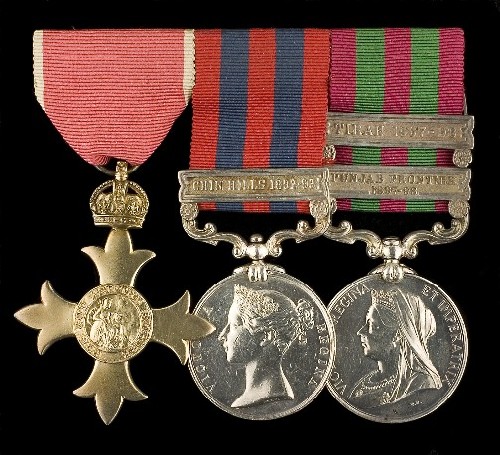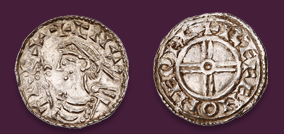
Auction: 9022 - Orders, Decorations, Medals & Militaria
Lot: 6
x An Unusual Great War ´Civil´ O.B.E., ´Chin Hills 1892-93´ Group of Three to Lieutenant-Colonel M.B. Roberts, 39th Garhwal Rifles a) The Most Excellent Order of the British Empire, 1st type, Civil Division, Officer´s (O.B.E.) breast Badge, silver-gilt (Hallmarks for London 1919) b) India General Service 1854-95, one clasp, Chin Hills 1892-93 (Lieutt. M.B. Roberts 39th Garhwalis), officially renamed c) India General Service 1895-1902, V.R., two clasps, Punjab Frontier 1897-98, Tirah 1897-98 (Captn. M.B. Roberts 39th Bl. Infy.), light contact marks, otherwise very fine or better, scarce to European Officers, mounted for wear (3) Estimate £ 800-1,200 O.B.E. London Gazette 3.6.1919 Lt. Col. Montgomery Browne Roberts (Indian Army, retired), 39th Garhwal Rifles, United Provinces ´´For valuable services rendered in India in connection with the war´´ [The Regimental History lists the following by his award details, ´´The state of Colonel Roberts´´ health precluded him from being re-employed. He, nevertheless, rendered service to the Regiment, especially in recruiting matter´´ - perhaps thus explaining why the award was Civil] Lieutenant-Colonel Montgomery Browne Roberts, O.B.E. (1863-1924); commissioned Lieutenant (from Militia) Leinster Regiment, 1885; transferred Indian Army the following year and was posted to 2/3 Goorkhas (three years later to become the 39th Garhwali Regiment of Bengal Infantry), 1887, ´´towards the end of 1889 the Battalion furnished a detachment, under Lieutenants A.H. Battye and M.B. Roberts, which took part in this reconnaissance (also known as the Niti Expedition). The force was composed of 209 men of the two battalions of the 3rd Gurkhas, with six British officers (Major C. Pulley in command), and had for its object the dislodging of a party of Tibetans who had established themselves within our frontier at Barahoti, and were levying tolls, etc. At Tapuban the column was divided. Detachments of the 2nd Battalion were directed to proceed via Malari and the Chorhoti Pass and via the Mirchauk Pass to the same destination. Here traces of occupation were found, but the Tibetans had evidently vacated on the approach of winter. The interest in this expedition consists in the fact that disciplined troops operated at elevations between 17,000 and 18,000 feet along rugged precipices and stupendous crags and glaciers, enduring extreme cold and fatigue, and at great risk of being cut off any day by impending snow. The detachment of the Battalion returned to Kaludanda on December 21st, after an absence of just under two months. The troops engaged were accorded the approval of H.E. the Commander-in-Chief for hard work well carried out´´ (Regimental History refers); served with the regiment in the Northern Chin Hills during the Siyin-Nwengal uprising, 1892-93; Captain 1896; served on attachment in Russia 1895-96, qualifying as a 2nd Class Interpreter in Russian; served with the regiment on the North West Frontier, 1897-97, including operations in Bajaur; advanced Lieutenant-Colonel 23.5.1911; retired 20.1.1913; Thanked by the Lieutenant-Governor United States Provinces (as President of the United Provinces War Board) for his services; in later life he provided the "Introductory" for the Historical Record of the 39th Royal Garhwal Rifles; died in Malaga, Spain.
Sold for
£680




